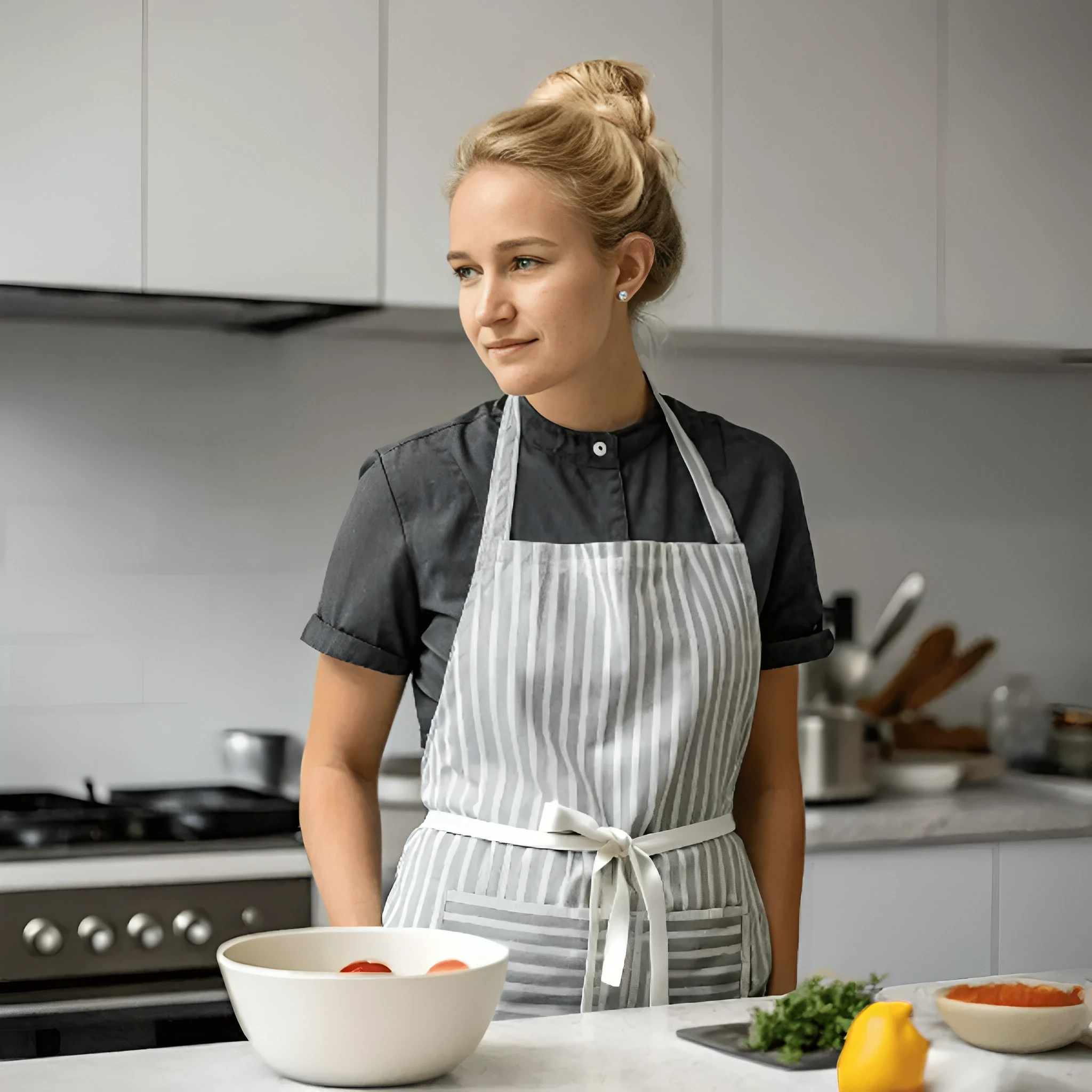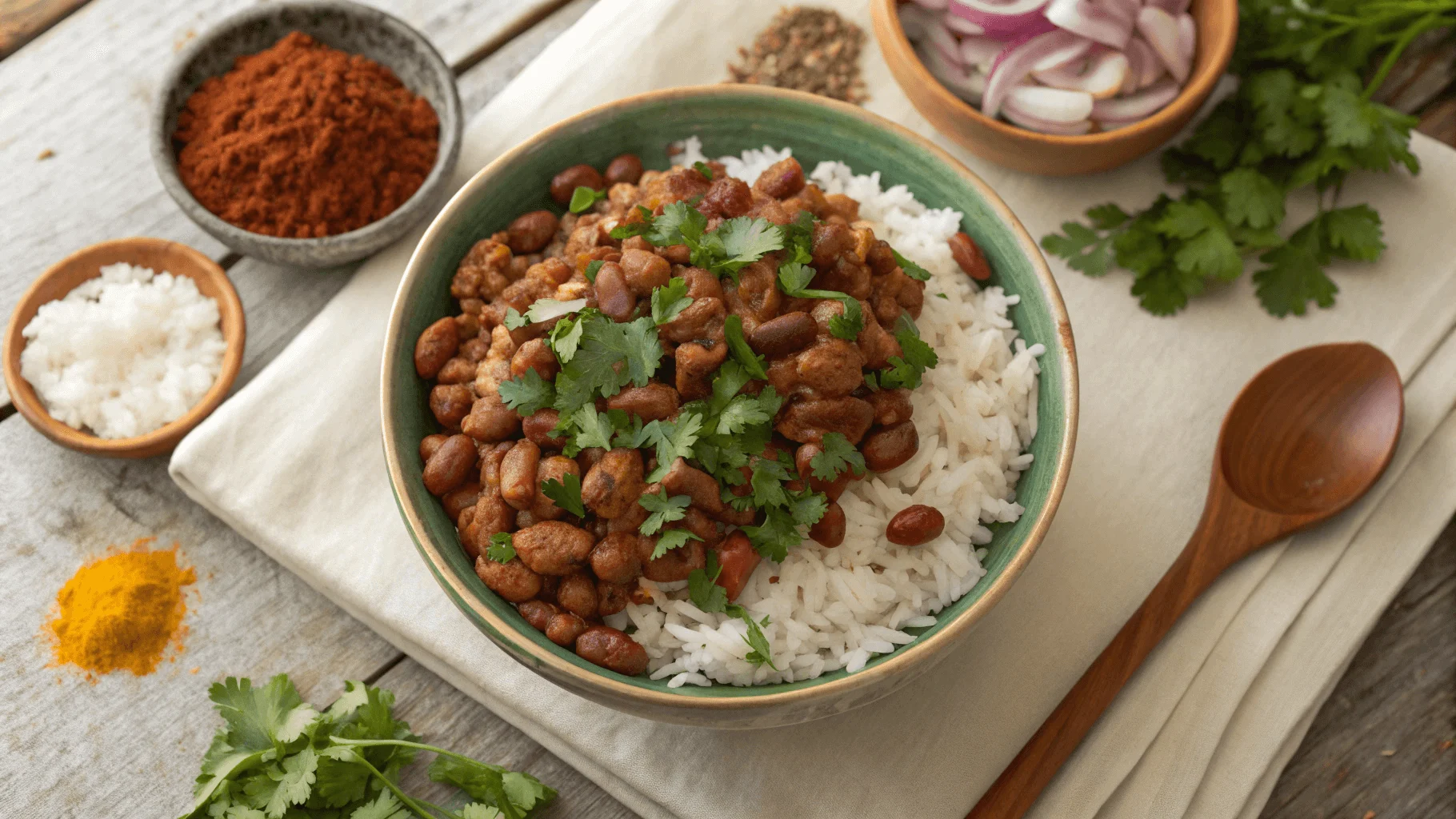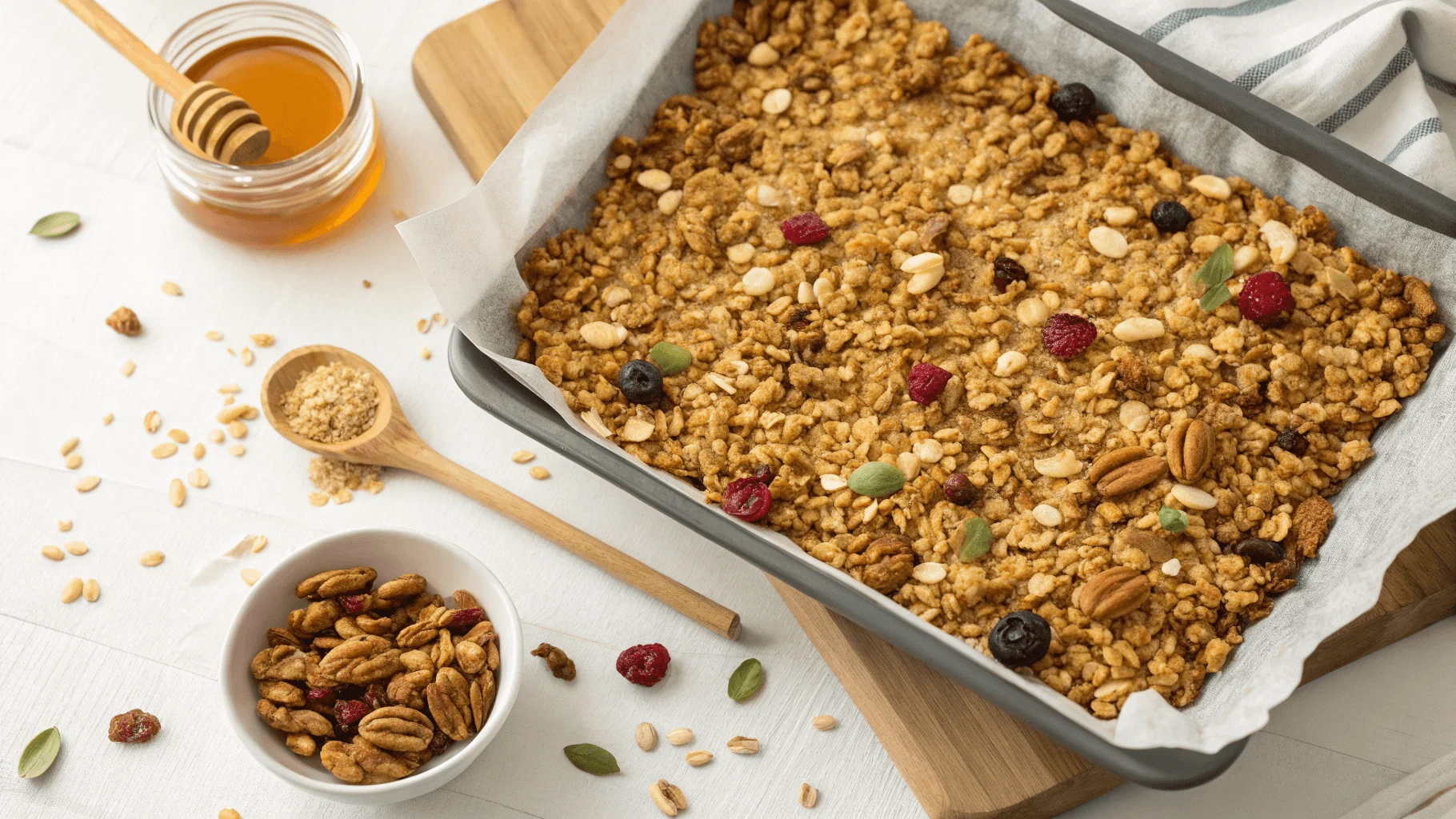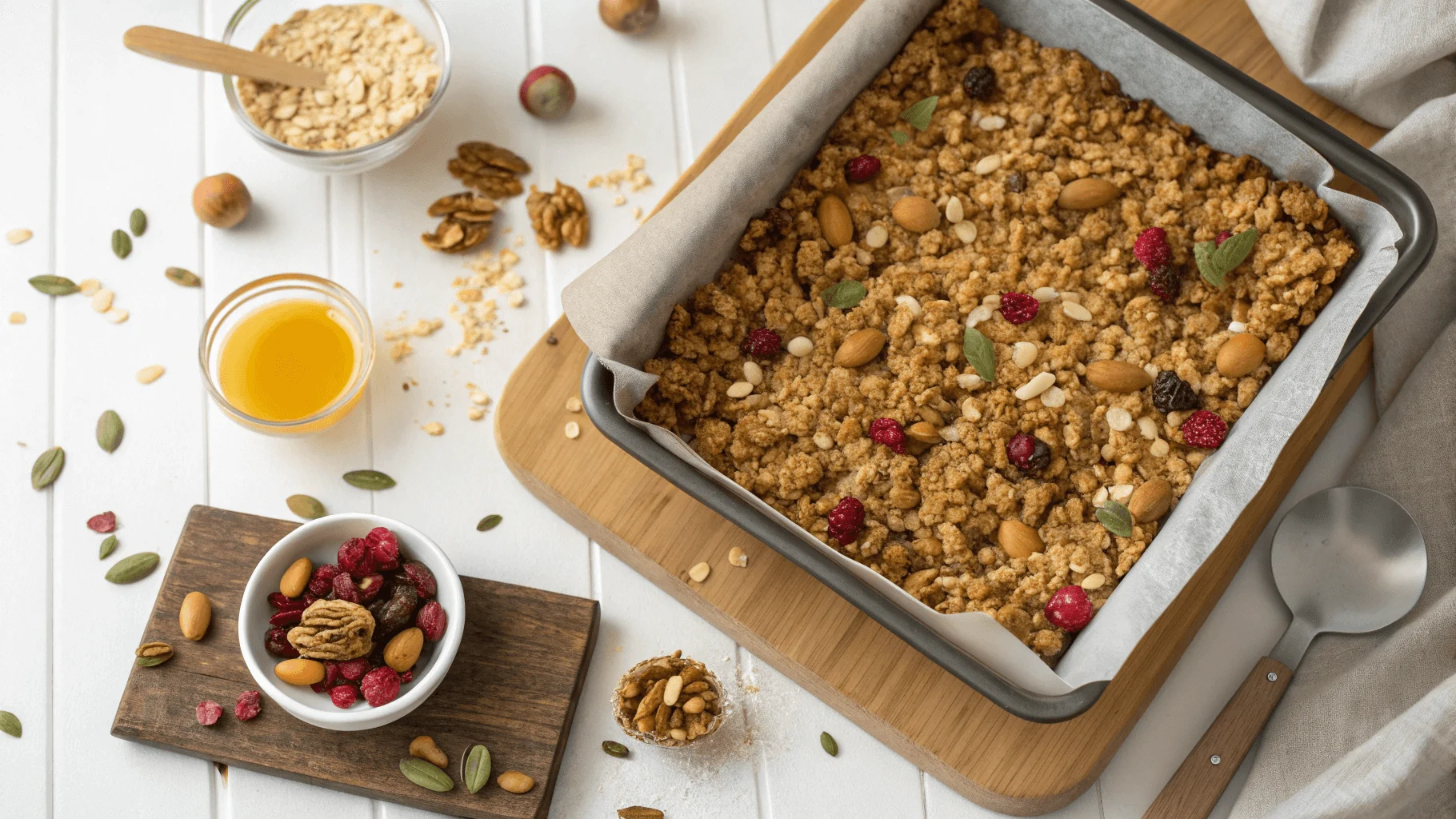Parmesan crust is a flavorful addition to a variety of dishes. It adds a rich, savory crunch that complements both meat and vegetable recipes. Whether you’re preparing chicken, fish, or even vegetables, parmesan crust offers a crispy texture and a distinct, cheesy flavor. Understanding what parmesan crust is made of can help you elevate your cooking and experiment with new flavors and textures in your meals.
In this article, we will cover everything you need to know about parmesan crust. From its basic ingredients to its health benefits, preparation methods, and common variations, you’ll discover how this crust can be a game-changer in your kitchen. Let’s explore the details of parmesan crust ingredients and ways to incorporate it into your cooking.
The Basics of Parmesan Crust
What is a Parmesan Crust?
Parmesan cheese primarily forms the base of parmesan crust, often combined with breadcrumbs and seasonings. The crust forms a crunchy, golden layer when baked, giving dishes a savory, crispy finish. The cheese itself is the star ingredient, providing a sharp and nutty flavor that pairs well with a variety of proteins and vegetables.
What makes parmesan crust stand out is its simplicity and versatility. It’s a perfect choice for anyone looking to add texture and a burst of flavor without complicating the recipe. Whether you’re making parmesan-crusted chicken, fish, or roasted vegetables, the base remains the same, giving you endless possibilities to customize.
How is it Different from Other Crusts?
Parmesan crust stands out from other crusts due to its unique ingredients and texture. Unlike traditional breadcrumb crusts that can be bland and dry, parmesan crust provides a cheesy, umami-rich coating. The crispy texture achieved when baking parmesan cheese creates a crunch that is both satisfying and flavorful.
Additionally, parmesan crust is often lighter and can be made without gluten or flour, making it suitable for gluten-free diets. The natural oils in the cheese also give the crust a glossy, appetizing appearance once cooked. Overall, parmesan crust combines a rich flavor with a satisfying crunch, unlike many other crusts that might lack depth in taste.
If you’re intrigued, you might also want to see how to make Longhorn Parmesan-crusted chicken for inspiration on using this versatile topping.
Key Ingredients in Parmesan Crust
The Role of Parmesan Cheese
At the heart of parmesan crust is, of course, parmesan cheese. This aged cheese has a rich, nutty flavor that gives the crust its signature taste. When grated and used as the base of the crust, parmesan melts and crisps up, forming a golden, crunchy coating. The saltiness of parmesan also adds a savory depth to dishes.
Parmesan cheese is a hard cheese that doesn’t melt in the traditional sense, which is why it’s so perfect for creating a crust. Its firm texture helps it crisp up beautifully in the oven or skillet, forming a protective coating that locks in moisture in the dish while still providing a delightful crunch.
Want a breakdown of what makes Parmesan cheese so versatile? Discover what parmesan-crusted chicken is made of to better understand the interplay of ingredients.
What Other Ingredients Make Up Parmesan Crust?
Aside from parmesan cheese, other ingredients commonly found in parmesan crust include breadcrumbs, butter or olive oil, and a variety of seasonings. Breadcrumbs help provide structure and contribute to the crispiness of the crust, especially when combined with the cheese. Butter or olive oil is typically used to bind the ingredients together, ensuring the crust holds its shape during cooking.
Seasonings such as garlic powder, oregano, and black pepper are often added to enhance the flavor profile. These seasonings work in harmony with the cheese, adding extra depth and making the crust more flavorful.
Are There Variations in Parmesan Crust Ingredients?
Yes, there are many variations of parmesan crust ingredients based on dietary preferences and desired flavor profiles. For example, gluten-free breadcrumbs can replace traditional breadcrumbs for a gluten-free version of the crust. Some recipes also call for adding herbs like basil or thyme, which can infuse the crust with fresh, aromatic flavors.
Additionally, you can experiment with different types of cheese, such as romano or asiago, for a more robust or different flavor. The choice of oil (butter, olive oil, or even coconut oil) can also affect the flavor and texture, giving you flexibility in creating the perfect parmesan crust for your dish.
Health Benefits of Parmesan Crust
Is Parmesan Crust Healthy?
The healthiness of parmesan crust depends on the ingredients you choose to use. Parmesan cheese, while high in protein and calcium, is also rich in fat and sodium, so it should be consumed in moderation. However, by using olive oil instead of butter and opting for whole-grain breadcrumbs, you can make the crust healthier without sacrificing flavor.
Parmesan crust can fit into a balanced diet when used as a topping for vegetables or lean proteins. For those looking to avoid gluten or reduce their carbohydrate intake, a gluten-free or low-carb parmesan crust can be a great alternative.
For tips on keeping your breading intact during cooking, check out how to keep breading on chicken parmesan, which offers practical advice for maintaining a perfectly crisp crust.
Nutritional Profile of Parmesan Crust
The nutritional content of this coating can vary depending on the ingredients used, but a typical coating offers a good amount of protein and fat. Parmesan cheese provides around 10 grams of protein and 7 grams of fat per ounce, while breadcrumbs add additional carbohydrates. Olive oil, if used, contributes healthy fats, such as monounsaturated fats, which are beneficial for heart health.
In a typical parmesan crust recipe, the main nutritional benefits come from the cheese, which is rich in calcium and protein, essential for bone health and muscle function. However, it’s important to consider portion sizes, as the fat and sodium content can add up quickly.
How to Make Parmesan Crust
Step-by-Step Guide to Making Parmesan Crust at Home
Making this coating at home is simple and requires just a few basic ingredients. Here’s a basic guide to preparing it:
- Gather the Ingredients: You will need grated parmesan cheese, breadcrumbs (or a gluten-free substitute), butter or olive oil, garlic powder, and your choice of seasonings.
- Prepare the Base: In a mixing bowl, combine the parmesan cheese, breadcrumbs, and seasonings. Add a small amount of melted butter or olive oil to bind the ingredients together.
- Coat Your Protein or Vegetables: Dip your meat, fish, or vegetables in the mixture, ensuring they are evenly coated.
- Cook: Bake in the oven at 375°F (190°C) for 10-15 minutes or until the crust is golden and crispy.
By following these steps, you can create a delicious coating to enhance your dishes.
Common Mistakes to Avoid When Making Parmesan Crust
When preparing the coating, there are a few common mistakes to avoid:
- Using Pre-grated Parmesan: Pre-grated parmesan often contains fillers that prevent the crust from crisping properly. Always use fresh, finely grated parmesan for the best results.
- Not Binding the Ingredients Properly: If the mixture is too dry, the crust may not stick. Ensure that the butter or oil is mixed in well to create a moist, sticky texture.
- Overcrowding the Baking Sheet: For the crust to crisp evenly, make sure there is space between each piece of coated food. Overcrowding can cause the crust to steam instead of bake, resulting in a less crispy texture.
By avoiding these mistakes, you’ll ensure your coating is always crisp and flavorful.
Parmesan Crust in Cooking
Using Parmesan Crust on Meat Dishes
This coating is perfect for meat dishes, particularly chicken and pork. When applied to chicken breasts or pork chops, it helps to lock in moisture while creating a crispy, golden exterior. The cheese adds a savory flavor that pairs beautifully with the natural taste of the meat.
To use this coating on meat, coat the meat with the mixture, then bake it in the oven or pan-fry for a delicious, crunchy finish. You can use this method for a variety of meats, boosting versatility and flavor.
Using Parmesan Crust on Vegetables
Parmesan crust isn’t just for meat; it’s a great way to elevate vegetable dishes. Vegetables like zucchini, eggplant, and cauliflower benefit from the crispy, cheesy coating. The crust adds a savory depth that balances the natural sweetness of the vegetables.
Simply coat the vegetables with the parmesan mixture and bake until golden. This method is particularly useful for making vegetables more appealing to picky eaters or for creating a more indulgent side dish.
How Parmesan Crust Enhances the Flavor of Dishes
The primary way this coating enhances the flavor of dishes is through its combination of textures and flavors. The crispiness adds a satisfying crunch, while the parmesan brings a sharp, nutty flavor that complements savory dishes. The coating also acts as a barrier, locking in moisture and ensuring that your dish stays juicy and tender.
Incorporating this coating into dishes elevates both the texture and flavor, making simple meals feel more gourmet. It’s an easy way to add complexity and depth to your cooking.
Variations of Parmesan Crust
Cheese Variations in Parmesan Crust
While parmesan cheese is the classic choice, you can experiment with other cheeses to create different flavors in your coating. Romano, asiago, or even cheddar can be used in place of or in addition to parmesan. These cheeses bring their own unique flavors, from sharp and tangy to mild and creamy.
Using a combination of cheeses can result in a richer, more complex flavor profile that enhances the dish in unexpected ways.
Gluten-Free Parmesan Crust
For those with dietary restrictions, a gluten-free coating is a great alternative. To make a gluten-free version, simply substitute regular breadcrumbs with gluten-free breadcrumbs or almond flour. This ensures that those avoiding gluten can still enjoy the crispy, cheesy texture that the coating provides.
The flavor remains similar, as the parmesan cheese continues to be the main ingredient, but the absence of gluten makes it suitable for a wider range of diets.
Low-Carb Parmesan Crust Recipes
For those on low-carb diets, this coating can be easily adapted to fit within a low-carb or keto meal plan. Instead of breadcrumbs, you can use ground almonds, coconut flour, or crushed pork rinds. These substitutions help to keep the carb count low while maintaining the desired texture and flavor.
These low-carb variations allow you to enjoy all the benefits of the coating while staying in line with your dietary goals.
Common Dishes That Feature Parmesan Crust
Parmesan-Crusted Chicken
One of the most popular uses for parmesan crust is on chicken. Parmesan-crusted chicken provides a crunchy, flavorful outer layer while keeping the chicken juicy and tender inside. It’s a simple yet impressive dish that works for both weeknight dinners and special occasions.
To make parmesan-crusted chicken, coat chicken breasts with the parmesan mixture and bake until golden and crispy. The result is a delicious, satisfying dish that pairs well with a variety of sides.
Parmesan-Crusted Fish
The coating is also a fantastic way to prepare fish. It adds a satisfying crunch to delicate fish fillets, such as cod or tilapia, while providing a rich, cheesy flavor that complements the mild taste of the fish. The crispiness also helps to prevent the fish from becoming too dry during cooking.
This dish is perfect for seafood lovers looking to add a new twist to their usual recipes.
Parmesan-Crusted Vegetables
The coating works wonders on vegetables, turning them into irresistible side dishes. Vegetables like asparagus, broccoli, and potatoes are all enhanced by a layer of crispy cheese. The cheese brings out the natural flavors of the vegetables, making them even more delicious.
By using this coating on vegetables, you can create a healthy, flavorful side that’s both nutritious and indulgent.
FAQs
Can Parmesan Crust Be Made in Advance?
Yes, the coating can be made in advance. If you want to save time, you can prepare the mixture ahead of time and store it in an airtight container in the refrigerator. You can also coat your meat or vegetables and refrigerate them until you’re ready to cook.
Can I Freeze Parmesan Crust?
Freezing the coating is possible, but it’s best to freeze the mixture separately from any meat or vegetables. When freezing, store the mixture in an airtight container or freezer bag to prevent it from becoming stale.
When ready to use, thaw the crust mixture in the refrigerator before applying it to your dish.
What Are the Best Dips for Parmesan-Crusted Dishes?
Parmesan-crusted dishes pair well with a variety of dips, depending on the flavor profile of your meal. For chicken or fish, try a tangy dipping sauce like lemon aioli, garlic butter, or a creamy ranch dressing. For vegetables, a tangy balsamic glaze or even a simple marinara sauce works wonderfully.
These dips complement the coating and add a fresh contrast to the rich, cheesy flavor.
Conclusion
This coating is a versatile, flavorful addition to many dishes, providing a crunchy, cheesy texture that enhances the flavor and texture of meat, fish, and vegetables. By understanding what it is made of and how to make it, you can add a touch of gourmet flair to everyday meals. Experiment with variations and use this coating in a variety of dishes to enjoy its many benefits. Whether you prefer a classic version or a gluten-free or low-carb variation, there’s a recipe for every taste and dietary need.






5 thoughts on “How To Make Parmesan Crust: What Are The Key Ingredients?”